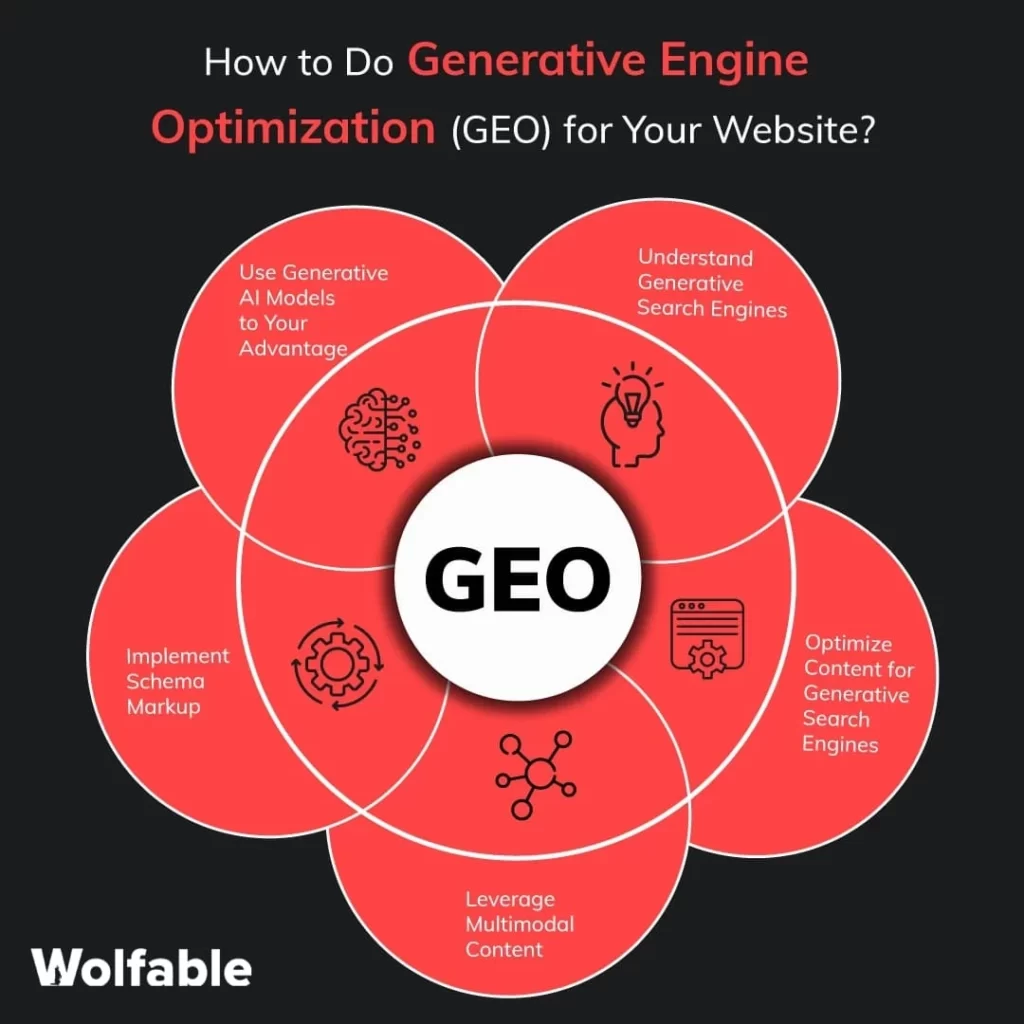Understanding Generative Engine Optimization (GEO)

The New Frontier in Digital Marketing
With a fast-changing world in digital marketing, AI has been ushering in new paradigms towards content visibility and search optimization. GENERATIVE ENGINE OPTIMIZATION (GEO) is one such emerging concept that deals with ensuring content visibility in AI-generated answers. The article goes into the nitty gritty of what GEO entails, contrasting it with traditional Search Engine Optimization and explaining what this means for the future of digital marketing.
- What Is Generative Engine Optimization (GEO)?
Generative Engine Optimization or GEO is described as optimizing digital content to enhance visibility in AI-influenced search results and generative AI responses. While regular SEO is concerned with securing a particular position in typical search engines such as Google or Bing, GEO, on the other hand, aims at AI-based programs that synthesize answers like ChatGPT, Google’s Gemini, Claude, and Perplexity.
en.wikipedia.org
The phrase “Generative Engine Optimization” was first introduced in 2023 by Gao, Liu, Si, Meng, Xiong, and Lin. The insightful paper offered the concept of GEO as a new paradigm for assisting content creators to improve visibility of their content within responses from generative engines. The study further proposed a benchmarking data set named GEO-Bench for experimentally benchmarking the efficacy of GEO.
seo.ai
Lo
- Traditional SEO vs. GEO: The Key Differences
Though SEO and GEO essentially carry the imperative of enhancing content visibility, they inherently differ in approach, target, and measurement.
(a) Target Platforms
SEO: Concentrates on traditional search engines, wherein a user types in queries, and websites are ranked accordingly.
seo.ai
GEO: Geared towards AI-based search engines that produce answers to full crown responses by ingesting and synthesizing information from numerous sources.
seo.ai
+1
arxiv.org
+1
(b) Content Creation and Optimization
SEO: The usual practice involves purely human-written content, keyword optimization, backlinks, and metadata.
GEO: Uses AI-generated content generation and optimization aimed at user intent and search behavior.
medium.com
(c) Update Frequency
SEO: Update processes for content are manual and somewhat ad hoc.
medium.com
GEO: Has the leverage of almost continuous, AI-aided content refinement processes that keep the content fresh and tightly matched to user intent.
medium.com
(d) The Metrics of Success
SEO: Click-through rate, bounce rate, and time spent on page are some of the commonly used measures.
seo.ai
GEO: Impression metrics become the measure of success, which track the citations’ visibility and relevance to the user query.
seo.ai
- The Mechanics of GEO
GEO operates by optimizing content with the hope that the AI-generated response will cite or feature it. These methods may include:
+2 seerinteractive.com
+2 boomcycle.com
+2 en.wikipedia.org
Structured Content: Organize content for ease of AI model consumption: use bullet points, headings, and concise summaries.
Authoritative Language: Use credible and assertive language with the intent to gain greater chances of AI systems citing the content.
AI-Specific Metadata: Use metadata targeted for AI consumption such as llms.txt files to direct AI models during the selection of content.
Continuous Optimization: Continually improve and update the content while maintaining alignment with user intent and search behavior through the employment of AI tools. medium.com
- The Rise of AI-Driven Search Engines
Due to the emergence of AI systems such as Google’s Search Generative Experience (SGE) and BingChat, a paradigm shift has been made in the way users search for information. Instead of simply
Best digital marketer in calicut
recommending websites, such search engines respond with all-encompassing answers, synthesizing information from various sources.
en.wikipedia.org
+3
seo.ai
+3
linkedin.com
+3
The circumstance here pressures digital marketing on:
Declining Click-Through-Rate: Immediate answers being given by AI discourage users from clicking through individual websites.
wsj.com
Increasing Importance of Citations: And herein citation of sources in AI-generated responses means visibility and authority.
- Implementing GEO Strategies
Some strategies to consider for successful GEO implementation include:
- Understand AI Behavior
Understand how AI models interpret information and synthesize an answer. This entails understanding what algorithms the machines use and which sources of data they employ for providing answers.
- Generate High-Quality, Structured Content
All structured content must be very organized, extremely parsable, and rich in information. Using headings and bullet points would help AI to parse through the list quickly. It is equally important to provide a summary a16z.com.
- Optimization for User Intent
Develop content relevant to the user’s immediate search queries while looking ahead to potential follow-ups or complementary questions so as to increase relevance and usefulness.
zozimus.com
+1
surferseo.com
+1
- Monitor and Adjust
Track all scores received and position achieved for the content presented in AI-generated responses, then adjust accordingly. Employ ranking tools and analytics to assess the output visibility and citing frequency.
seo.ai
+1